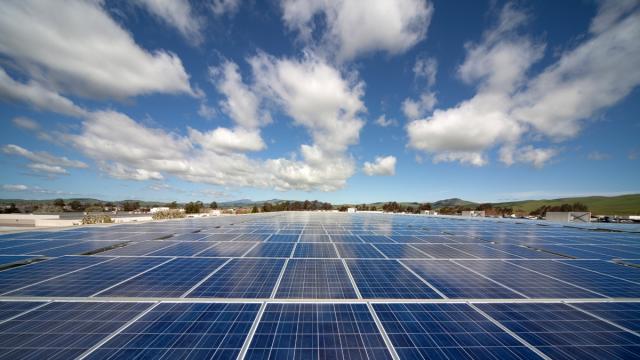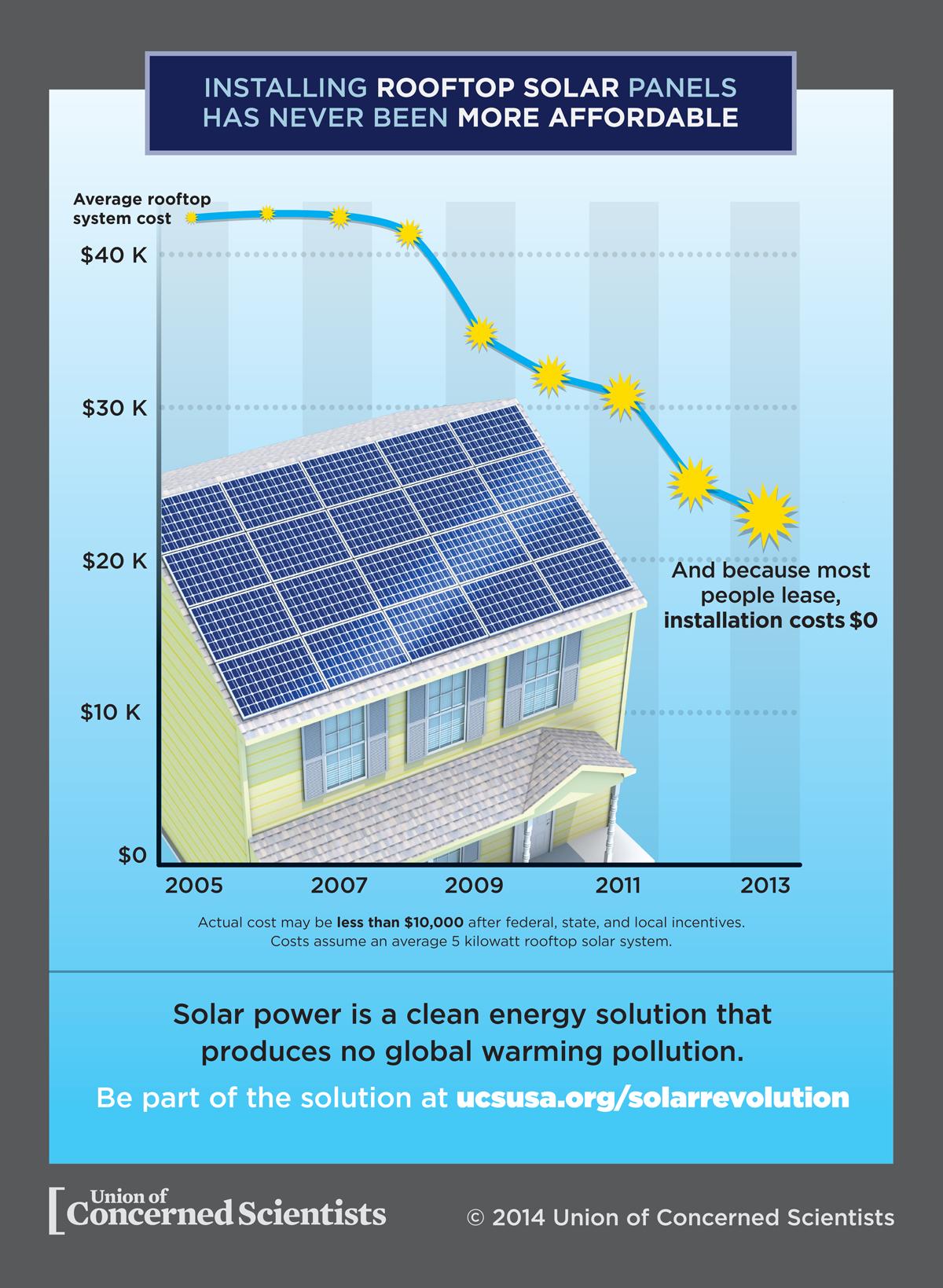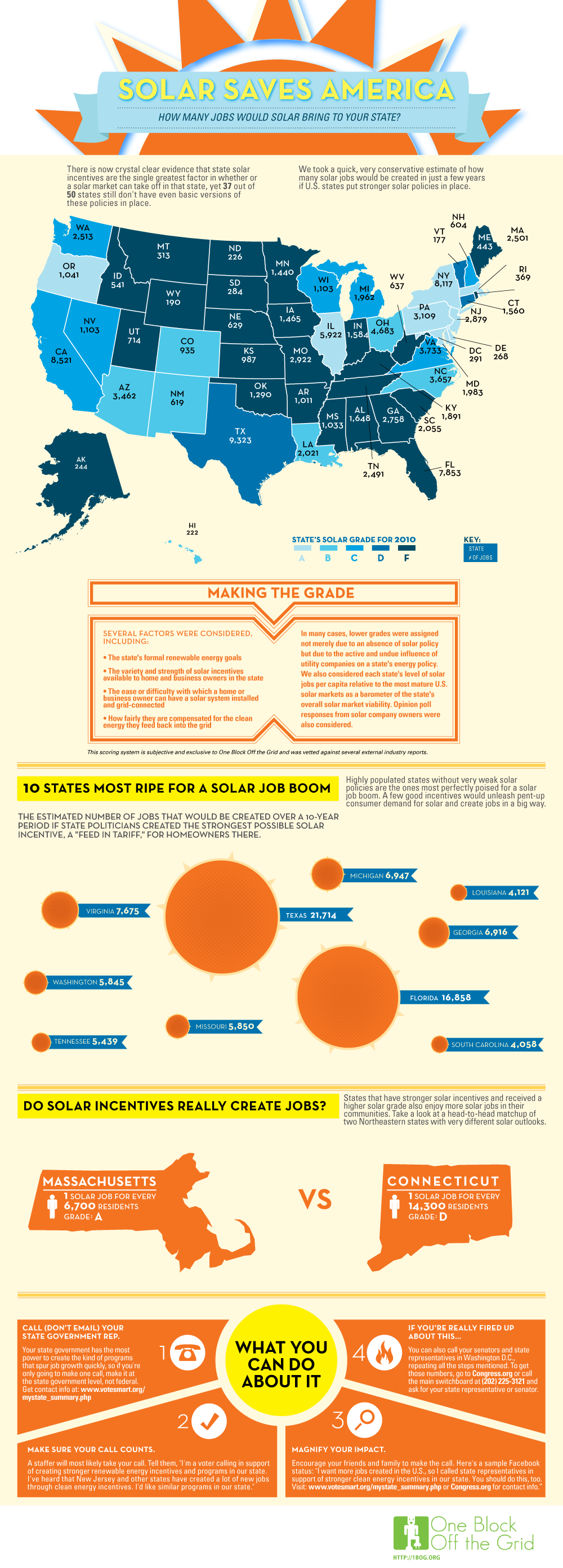
Shining. Soaring. Skyrocketing. Solar is so exciting, we’re running out of adjectives.
The what, the why and the where-to of America’s solar power revolution are the subjects of a new Union of Concerned Scientists (UCS) report and infographic. It’s a story worth celebrating.
The Four P's of Rooftop Solar
The story of solar, as told in UCS’s new Solar Power on the Rise report, is full of great news, such as:
-
The amount of solar power installed in the U.S. by 2013 was more than five times 2010’s level.
-
Our country has enough solar to power some 2.4 million typical U.S. households.
-
In June, California set a one-day solar record, with solar meeting 8 percent of its overall electricity needs.
Rooftop solar, the photovoltaic (PV) panels dotting the roofs of a rapidly growing number of homes and businesses, is one big piece of the charge, worthy of a closer look.
And one way to consider its progress is to borrow business types’ “4 Ps” of marketing, for our own 4 Ps of solar—Product, Pricing, Place and Policy.

Product: Rooftop Solar is One to Watch
Rooftop solar is the most visible piece of America’s clean energy revolution, and a shining star in the energy firmament. Rooftop solar in this country has grown an average of more than 50 percent per year, with its installed capacity tripling from 2010 to 2013. PV now adorns some 400,000 homes, 13 times the number just eight years ago.
Pricing: Solar is Getting More Accessible All the Time
One exciting driver behind the surge in rooftop systems has been the plummeting costs of solar, along with the innovative ways people are getting solarized. From 2010 to 2013, the price of a typical household system dropped by almost 30 percent. A typical system that might have cost $32,000 in 2010 may now cost $23,000, even before tax credits and other incentives; in leading states, the total final cost could be less than $10,000.
Leasing or power-purchase arrangements may make it even easier; two-thirds of new residential systems are third party-owned, often with low or no up-front payments.
Place: Solar Works All Over
One fact that isn’t always obvious (including to those of us in foggy and cloudy climates) is how widespread the solar resource is. When it comes to PV, to a great extent solar is an equal-opportunity renewable energy. The near ubiquity of solar means that the U.S.’s 6,000 solar companies and 140,000 solar workers are spread across all 50 states.
Policy: Smart Solar Policies Make a Difference
What’s driving all this progress? Along with prices (and sunlight), it’s policies — from net-metering and value-of-solar tariffs, to state renewable electricity standards and solar carve-outs, plus tax incentives (federal, state and local) — all creating demand and helping solar capture value. Forward-looking locales are putting it all together to great effect.
The Revolution Scales Up
Another great thing about the exciting solar story is that it isn’t just about rooftop PV. Large-scale PV and concentrating solar power (CSP) have their own amazing stories to tell. Electricity from new large PV projects in 2013 is half as expensive as in 2010, and installed costs are 60 percent lower than rooftop solar’s. And CSP is set to have its best year ever; 2014 has already seen the world’s largest solar facility turn on, and more is on the way.
Keeping the solar revolution going will take determination and attention. Good investments. Smart policy decisions. Things like:
-
Maintaining strong renewable electricity standards and making sure solar plays a strong role in state plans to meet the EPA’s proposed power plant carbon standards.
-
Sustaining the key support that solar has gotten from the 30 percent federal investment tax credit.
-
Continuing to invest in building scale and improving technologies, including around energy storage.
-
Helping utilities and regulators figure out new business models to let solar do what we need it to and know it can.
Some of the great developments in rooftop solar are most easily seen in UCS’s exciting new solar infographic, which highlights:
-
The incredible drop in costs in recent years.
-
Where rooftop solar might be poised to beat utility-supplied electricity (Hint: In more than half the states, now or in the very near future).
-
Solar’s growth trajectory, and what 2020 might bring (Hint: Millions of homes).
Just the Beginning
Solar Power on the Rise concludes with this: From rooftops to landfills to large open spaces, harnessing the full power of solar energy will be a key part of our nation’s transition to clean, reliable and affordable electricity that can safeguard our environment, protect our health and power our economy.
That’s how the report ends. But the solar revolution? No end in sight. We may need to come up with some more adjectives.
3 WAYS TO SHOW YOUR SUPPORT
- Log in to post comments
















